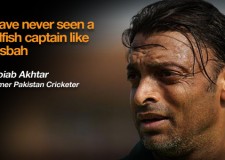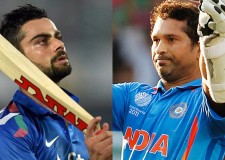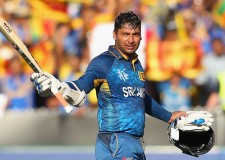Saluting the Trio of Left Arm Pace Bowling – Mitchell Starc, Trent Boult and Wahab Riaz
Three men, three nations, three left-arm stars. It was the World Cup that was supposed to celebrate belligerence, the one where batsmen were meant to assert their dominance – with the assistance of batting powerplays, two balls and bats resemblant of battleaxes. To an extent it did, but by the time six weeks of competition concluded in Melbourne, a certain bowling trio had ensured the marks they left were the most indelible.
The champion, Mitchell Starc; the valiant runner-up, Trent Boult; and the ferocious Wahab Riaz – a man who breathed fire in lieu of oxygen. Infuriated by the assumption that they had been reduced to no more than pawns within the game, they successfully sought promotion, and then wreaked mayhem in a manner usually reserved for the board’s superior pieces. Increasingly empowered as the tournament wore on, Starc, Boult and Wahab controlled cricket in a way N. Srinivasan, Giles Clarke and Wally Edwards can only dream of.
When Starc won the final
The final. First over. Australia versus New Zealand. Brendon McCullum versus Mitchell Starc.
Swing and a miss, swing and a miss, bails dislodged. In three deliveries, the bowler had changed the complexion of both the final, and the World Cup. The Kiwi devastator who had pummelled without inhibition or remorse on home territory had been castled for nought in Starc’s backyard – a play that sent 93,000 wild. Ball had trumped bat and in truth, New Zealand never recovered from McCullum’s exit, who hadn’t merely captained just 11 players, but a country. The Aussies, donned in canary yellow, sauntered to a fifth world crown.
Nine years ago, South Africa chased down 438 to win an ODI in Johannesburg with one wicket to spare. Last month, New Zealand nicked a victory by the same margin – their target was just 152. Both times, the opposition were Australia. So fascinating is this sport that matches so contrasting can produce such similar excitement. A lightning Boult struck at Eden Park, Trent’s five-fer for the Blackcaps skittled their trans-Tasman rivals for 151.
Yet, it was nearly not enough as Starc, once again in the limelight, took six to almost snatch the win. His escapades ultimately went unheralded due to Kane Williamson’s bullying six over long-on – the most famous match-winning six in Auckland, until Grant Elliott’s swat in the semi-final against South Africa that is. The battle of Oceania was a contest that saw batsmen marginalised, limited to the occasional glimpse of magic, but what a spectacle it was.
Wahab’s ferocious spell flattened Watson but didn’t finish him off
Separated from the rest, and arguably from his team too, Wahab’s quarter-final spell for Pakistan threatened to derail Australia – it perhaps would have had Shane Watson not been shelled by Rahat Ali at fine leg. With a terrifying performance, Wahab had cricket’s most studious romanticising over Pakistan’s fast bowling greats. Seething from the opposition’s chatter while he was batting, he unleashed a short ball masterclass to a petrified Watson.
Thoughts of attack turned to survival, and it was just his teammates who failed him with the aforementioned drop. He deserved far more than two wickets, but no one said sport was fair. Consistent inconsistency with the bat and in the field reminded us that this was still that Pakistan. It is hard not to sympathise with Wahab and the others who steamed in passionately. The method of Pakistan’s departure in the last eight reflected their tournament perfectly – the bowlers painfully fighting despite limpness from the bat.
Three anecdotes that will stain memories first, scorecards later.
Starc and Boult in particular had much more to marvel over, as indicated by their 22 wickets apiece – the most profitable figures of the World Cup, at averages of 10.18 and 16.86 respectively. Staggeringly, the former conceded a paltry 3.50 runs an over and gained a scalp every 17 balls – his 23.3 career strike rate is the best in One-Day Internationals.
Boult, meanwhile, claimed wickets in all nine matches and only twice did he not manage at least two; his total of 14 maiden overs were double the number anyone else could garner in the event. Wahab was more expensive – leaking more than 5.5 an over – but it was his zealous approach that will live long.
Indian pacers stepped up to the mark as well
Honourable mentions must also go to Tim Southee and the Indian duo of Umesh Yadav and Mohammed Shami. While Southee was often overshadowed by his compatriot Boult, his exhibition of swing in Wellington bamboozled England as he accrued seven wickets for 33 – a record for New Zealand in ODIs.
Yadav and Shami led India’s defiant retaliation to their critics, scooping 35 between them, with the latter taking a minimum of three in all but one of the five pool matches he played. The pair’s actions were instrumental in India bowling out their opponents in their opening seven games – only in the semi-finals against Australia did they come unstuck. Rarely for them, has ball outdone bat, and it was that which maintained their proficiency in ICC competitions.
The pattern is apparent. The teams with the most lucrative pacers did the best. For Australia, a roster of Mitchell Johnson, James Faulkner and Josh Hazlewood complimented Starc capably while Southee and Corey Anderson bolstered Boult (Daniel Vettori’s weaving spin was also a key contributor). India’s quicks thrived and South Africa would have perhaps made the final had they opted for Kyle Abbott instead of Vernon Philander in their last four clash against the Kiwis.
Essentially, the World Cup’s strongest quartet all boasted powerful bowling units. India’s yielding of 328 in their semi-final with Australia was the largest score given up by any of the four throughout. Combined, the other 10 teams surrendered a higher total 13 times – 400-plus was posted on three occasions.
That Scotland’s 318 was the highest total tracked down – by Bangladesh in Nelson – is telling. It implies the inferred triumph of the bat has yet to be proven in the chase – in fact, 350 or more has been hunted down just four times in 3,646 ODIs.
So as the doom-mongers continue to predict a soon-awaiting coffin for 50-over internationals, they must be reminded of two things: One, doom-mongers are generally wrong, and two, it was the bowlers who took up residence in the perceived batsman’s paradise.








